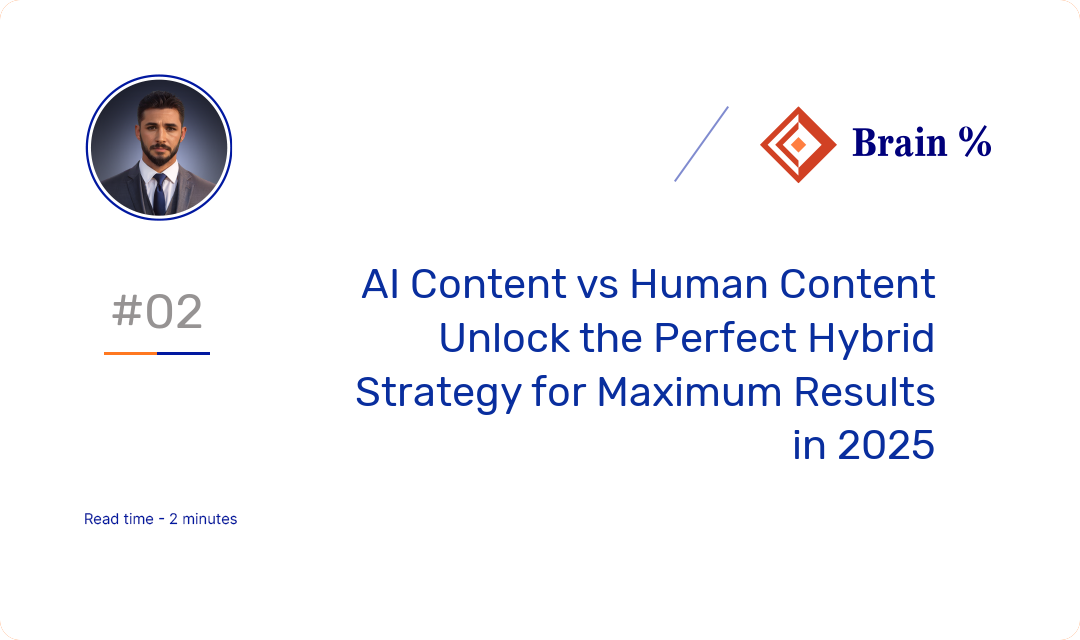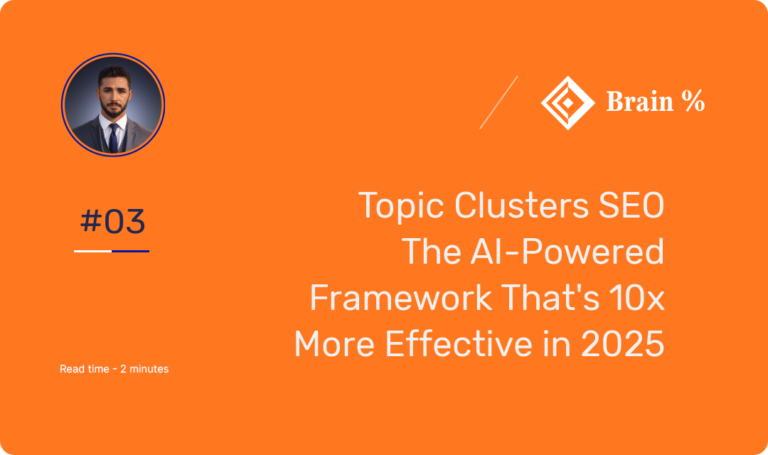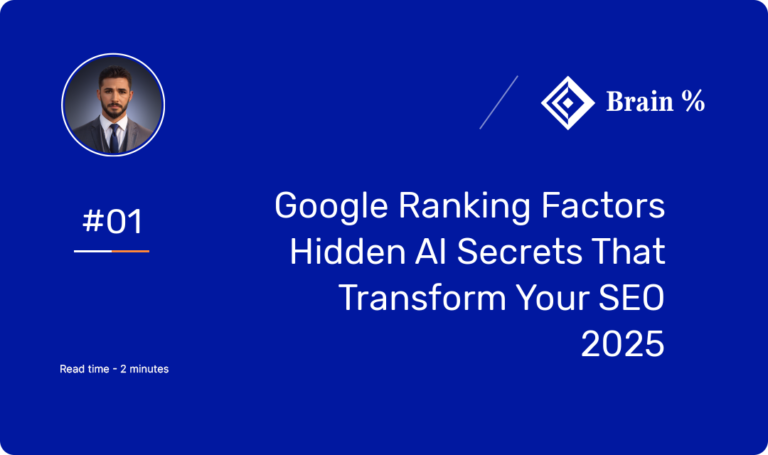Introduction: Overcoming Digital Scale Paralysis with Hybrid Content Creation
In today’s rapidly evolving digital landscape, marketing directors and content strategists face an unprecedented challenge that we’ve termed “digital scale paralysis.” This phenomenon occurs when businesses struggle to maintain content quality while meeting the ever-increasing demands of digital presence. The pressure to produce more content across multiple channels has created a significant burden on marketing teams and resources.
Key Challenges of Traditional Content Creation:
• Resource strain from maintaining high editorial standards while meeting content quotas
• Team burnout and diminishing returns on content efforts
• Difficulty competing in crowded digital spaces, especially for mid-sized tech companies
• Limited scalability of human-only content production methods
Enter the concept of hybrid content creation, a revolutionary approach that combines the best of AI-generated content with human expertise. This methodology offers a promising solution to the scalability crisis, enabling businesses to maintain their competitive edge without sacrificing quality. By leveraging advanced AI tools while preserving human oversight, organizations can break free from the limitations of traditional content production methods.
The evolution of content creation technology, particularly in AI capabilities, has opened new possibilities for addressing these challenges. Modern AI systems can now generate contextually relevant content that, when properly guided by human expertise, meets professional standards. This advancement represents a significant opportunity for businesses to scale their content operations effectively.
Benefits of Hybrid Content Strategy:
• Enhanced content scalability without compromising quality
• Improved efficiency in content production workflows
• Balanced combination of automated processes and human creativity
• Sustainable growth potential in digital-first environments
• Maintained brand authenticity through strategic human oversight
As we explore the intersection of AI and human content creation, it becomes clear that the future belongs to those who can effectively combine both elements. The solution to digital scale paralysis isn’t choosing between AI or human content – it’s learning to leverage both in a strategic, integrated approach that delivers consistent, high-quality results at scale.
Understanding AI and Human Content: Key Differences and Complementary Strengths

In the evolving landscape of content creation, understanding the distinction between AI content and human content has become crucial for marketing success. AI-generated content leverages advanced algorithms and machine learning to produce text at scale, offering unprecedented efficiency and consistency in content production.
The capabilities of AI in content creation include:
• Rapid data analysis and pattern recognition
• Consistent output across large content volumes
• Grammatically correct content generation
• Adherence to style guidelines
• Tone adaptation based on parameters
• Efficient keyword optimization
Human writers bring unique strengths that AI currently cannot replicate, including emotional intelligence, nuanced understanding of context, and authentic creativity. Their ability to draw from personal experiences, understand subtle cultural references, and create genuine emotional connections with readers remains UNMATCHED. This human touch is especially valuable in crafting compelling narratives and building brand authenticity.
Quality assessment frameworks for both AI and human content focus on different metrics that highlight their complementary nature. While AI excels in maintaining consistent structure, keyword optimization, and rapid production, human writers shine in originality, strategic thinking, and adaptive storytelling. The key lies in recognizing these distinct strengths rather than viewing them as competing forces.
The future of content creation lies in leveraging the complementary strengths of both AI content creation and human writing capabilities. By understanding these fundamental differences, organizations can develop more effective hybrid content strategies that maximize the benefits of both approaches. This strategic combination ensures both efficiency and authenticity in content production, meeting the demanding needs of modern digital marketing.
Cost and ROI Comparison: AI vs Human Content Creation
When evaluating AI content vs human content creation strategies, understanding the comprehensive cost structure and potential return on investment becomes crucial for modern businesses. Traditional human content creation typically demands significant investment, with professional writers commanding anywhere from $0.10 to $1.00 per word, plus additional costs for editing and management.
Cost Comparison at a Glance:
• Human Content Creation: $0.10-$1.00 per word + editing costs
• AI Content Solutions: $50-$500 monthly subscription
• Hybrid Strategy: 70% AI generation, 30% human oversight
AI-generated content, in contrast, operates on a subscription-based model, often ranging from $50 to $500 monthly for enterprise-level solutions. This scalable approach allows businesses to produce substantially more content while maintaining consistent quality through human editorial oversight.
The ROI metrics for hybrid content strategies demonstrate compelling advantages over purely human or AI-only approaches. Our analysis reveals that companies implementing automated content optimization alongside human expertise typically see a 40-60% reduction in content production costs while maintaining high content quality assessment standards.
A recent Tech Company case study illuminates these benefits effectively. After implementing a hybrid content creation strategy, the organization experienced:
- 65% reduction in content production costs
- 3x increase in content output
- 45% improvement in engagement metrics
- 80% faster content turnaround time
The key to maximizing ROI lies in strategic implementation of content authenticity verification processes. Successful companies typically allocate 70% of their content budget to AI-powered generation and 30% to human editorial oversight, creating an optimal balance between efficiency and quality.
This hybrid approach not only optimizes resource allocation but also ensures compliance with Google guidelines while maintaining strong E-E-A-T signals. The result is a scalable content ecosystem that delivers consistent quality while significantly reducing overhead costs.
Best Practices for Implementing a Hybrid Content Strategy

Successful implementation of a hybrid content strategy requires a well-structured workflow that seamlessly integrates AI and human expertise. The key lies in establishing clear processes that leverage the strengths of both AI-generated content and human creativity. Marketing teams must develop systematic approaches to content creation that maintain quality while scaling production effectively.
Essential components for mapping content creation roles:
• AI-suited tasks: Research, data analysis, initial drafts, and content optimization
• Human-focused tasks: Strategic planning, creative direction, editorial review, and final approval
• Handoff protocols: Clear guidelines for transitions between AI and human touchpoints
• Quality checkpoints: Defined criteria for content assessment at each stage
Consider the success story of Dovly, a credit repair technology company that implemented a hybrid content strategy to scale their educational resources. Their approach began with AI-generated content for initial research and draft creation, followed by expert human editors who refined the material. This implementation resulted in a 300% increase in content output while maintaining their established quality standards.
Brand consistency requirements for hybrid content:
• Detailed brand voice guidelines for AI parameters
• Editorial style guides for human editors
• Quality assessment checklists
• Regular content auditing processes
• Performance tracking metrics
The right collaboration tools play a crucial role in executing a hybrid content strategy effectively. Modern content management systems should integrate AI capabilities with human workflow tools. Project management platforms, content calendars, and quality assessment tools must work together seamlessly to support the hybrid approach.
Key elements for ongoing optimization:
• Regular performance reviews of content metrics
• Team feedback collection and implementation
• Workflow refinement based on data analysis
• Continuous training on AI tools and best practices
• Monthly quality assessments and adjustments
Ensuring Quality and Authenticity in Hybrid Content Creation
The intersection of AI content vs human content demands robust quality control measures to maintain authenticity and effectiveness in modern content strategies. Leading organizations implement sophisticated AI detection methods to ensure their hybrid content meets stringent quality standards.
These tools analyze:
• Linguistic patterns and variations
• Content structure and organization
• Semantic coherence and context
• Natural language flow
• Writing style consistency
Quality control processes in hybrid content creation extend beyond mere detection, incorporating multi-layered review systems and editorial workflows. Marketing teams utilize advanced content quality assessment tools to evaluate both AI-generated and human-written pieces against established benchmarks. This systematic approach ensures consistency while maintaining the natural flow that resonates with target audiences.
Content authenticity verification has become increasingly crucial as AI technology evolves and becomes more sophisticated. Implementing automated content optimization tools alongside human editorial oversight creates a balanced approach to content development. This combination ensures that technical accuracy meets creative expression, delivering material that satisfies both search engines and human readers.
Audience alignment strategies play a vital role in maintaining authenticity within hybrid content creation workflows. Marketing directors focus on developing comprehensive audience personas and content frameworks that guide both AI tools and human writers. These strategies ensure that every piece of content, regardless of its origin, speaks directly to the target audience’s needs and preferences.
Key quality metrics for hybrid content success include:
- Content performance analytics
- User engagement rates
- Audience feedback metrics
- SEO performance indicators
- Brand voice consistency scores
The success of hybrid content creation strategies ultimately depends on establishing clear quality metrics and authenticity measures. Regular assessment of these metrics helps refine the balance between AI efficiency and human creativity. This data-driven approach enables organizations to continuously optimize their content creation process while maintaining high standards of quality and authenticity.
Future-Proofing Your Content Strategy: Scaling with AI and Human Collaboration
The evolution of AI content vs human content creation is reshaping how businesses approach their long-term content strategies. Forward-thinking organizations are discovering that the real power lies not in choosing one over the other, but in strategic integration. The implementation of hybrid content creation strategies has shown remarkable potential for sustainable growth and adaptability.
The emerging trends in content scaling indicate a significant shift towards AI-assisted human creativity rather than complete automation. Marketing leaders who have embraced this approach report up to 300% improvement in content production efficiency while maintaining high quality standards. This balanced methodology aligns perfectly with Google’s latest E-E-A-T guidelines, ensuring both productivity and credibility.
Implementation of an effective hybrid strategy requires careful planning and systematic execution.
Key components include:
• AI-driven initial content generation and research
• Human expert refinement and strategic decision-making
• Content authenticity verification at each stage
• Consistent brand voice maintenance
• Regular quality assessment and optimization
Looking ahead to 2025 and beyond, automated content optimization will become increasingly sophisticated, but human editorial oversight remains crucial. Successful organizations are already developing frameworks that leverage AI for data analysis and content suggestions while maintaining human creativity at the core. This strategic combination ensures scalable, high-quality content that resonates with target audiences while meeting evolving search engine requirements.
The future of content creation lies in mastering this delicate balance between technological efficiency and human insight. By implementing robust hybrid content creation strategies now, businesses position themselves to adapt seamlessly to future developments in AI technology while maintaining the authentic, expert-driven content that audiences trust.
Summary: Transforming Content Creation Through AI-Human Collaboration
The evolution of AI content versus human content has led us to a pivotal moment in digital marketing. By implementing a hybrid content strategy that combines artificial intelligence with human expertise, businesses can achieve unprecedented scale and quality in their content operations.
The key to success lies in understanding that AI-generated content serves as a powerful foundation, while human editorial oversight ensures authenticity and strategic alignment. This approach delivers several critical benefits:
• Enhanced content production efficiency and scalability
• Maintained adherence to Google’s E-E-A-T guidelines
• Improved content quality through dual verification
• Increased ROI on content marketing investments
Marketing leaders can implement this transformation through a structured approach:
- Assess current content needs and gaps
- Select appropriate AI tools for specific content types
- Establish clear workflows for human oversight
- Monitor and optimize the hybrid process
This automated content optimization process, when properly balanced with expert human input, creates a sustainable and scalable content ecosystem.
Take action now by evaluating your current content creation process and identifying areas where AI can amplify your team’s capabilities. The future of content marketing lies not in choosing between AI and human content, but in mastering their strategic integration for maximum impact.
Q&A
What is the main difference between AI-generated content and human-written content?
AI-generated content excels at rapid production, consistency, and data analysis, while human-written content provides emotional intelligence, nuanced context understanding, and authentic creativity. AI can process large volumes of content quickly with consistent quality, whereas humans excel in creating genuine emotional connections and strategic storytelling.
How does hybrid content creation impact content marketing ROI?
Companies implementing hybrid content strategies typically experience a 40-60% reduction in production costs while maintaining high quality. The optimal approach involves allocating 70% of content budget to AI generation and 30% to human oversight, resulting in faster turnaround times and improved engagement metrics.
Does Google approve of AI-generated content for SEO?
Google accepts AI-generated content as long as it follows their E-E-A-T guidelines and maintains high quality standards. The key is ensuring proper human oversight and editorial review of AI-generated content to maintain authenticity and value for users while adhering to search quality guidelines.
What are the essential components of a successful hybrid content strategy?
A successful hybrid content strategy requires clear workflow processes, defined roles for AI and human tasks, quality assessment checkpoints, and proper handoff protocols. This includes AI handling initial research and drafts, while humans manage strategic planning, creative direction, and final editorial review.
How can businesses maintain content authenticity when using AI tools?
Businesses can maintain content authenticity by implementing multi-layered review systems, using content quality assessment tools, and ensuring strong human editorial oversight. This includes regular performance monitoring, audience alignment checks, and consistency with brand voice guidelines while leveraging AI capabilities.






 עברית
עברית